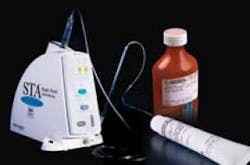Quadrant dentistry: Maximizing time, comfort, convenience, and profit
Jeff T. Blank, DMD
For more on this topic, go to www.dentaleconomics.com and search using the following key words: quadrant dentistry, patient benefits, radiographs, Jeff T. Blank, DMD, Discus Dental.
Presenting quadrant dentistry should be an integral part of any treatment philosophy. In addition to a comprehensive exam and radiographs, displaying retracted clinical pictures of each patient’s dentition facilitates communication and allows patients to express their values for achieving optimum health. The benefits are so compelling for both the patient and dentist that I believe it warrants consideration.
Patient benefits of quadrant dentistry
- It maximizes time. It calls for fewer appointments, less time off from work, and less childcare.
- It reduces cost. While the cost of care is the same, lost wages and sick/vacation time with multiple visits drastically escalates the overall expense.
- It reduces discomfort and stress. Anxious patients embrace fewer visits, fewer injections, one period of temporization, and more.
- There are fewer surprises over time. Have you ever had patients remark that every time they come to the office for a checkup, they need a new crown? More often than not the need existed, but for some reason we never told them.
Dentist benefits of quadrant dentistry
- Doctor time is maximized. Completing multiple restorations on one patient takes less time than doing the same number on multiple patients.
- It minimizes cost. There is less paid in nonproductive employee wages, fewer disposable goods, and less impression material, etc., which leads to huge savings.
- It reduces office and doctor stress. Fewer patients equal less scheduling headaches, no-shows, and cancellations.
- It increases the quality of care. Managing interproximal contacts, balancing aberrant occlusal forces, fine tuning occlusion, and delivering equally esthetic restorations can be more predictably delivered in quadrants rather than one tooth at a time.
- It increases revenue. Maximizing time, decreasing cost, less stress, and more dentistry significantly raises your bottom line.
Case example
The patient in Fig. 1 presented with the chief concern of crowning No. 28 after receiving root canal therapy by her previous dentist. A full mouth exam and radiographs were performed, and several clinical photos were taken of her oral condition. Findings in this quadrant included previous root canal therapy, and a large core was placed on tooth No. 31. The amalgam in tooth No. 30 showed slight marginal breakdown, but the patient said she wanted to have it removed for esthetic reasons. The occlusal composite in tooth No. 29 was apparently placed years ago with a high wear rate material, and approximately 1 mm to 2 mm of material had eroded from the surface. The patient remarked that the tooth was becoming sensitive and was a constant food trap.
The benefits for treating the entire quadrant were presented to her, and she accepted treatment. In a single appointment, a new composite core was placed in tooth No. 31, and teeth Nos. 30 and 29 were restored with Nuance Universal Composite (Discus Dental), with shade A2 replacing dentin and EG (enamel gray) replacing enamel. A prefabricated post and core was placed in No. 28, and along with No. 31 was prepared for crowns. A full arch impression was taken with Precision (Discus Dental) Light Body and Medium Viscosity tray material, and provisionals were fabricated from PERFECTemp II (Discus Dental) self-curing provisional material.
Fig. 2 shows the immediate result from the initial appointment. The patient was ecstatic to accomplish this much work in one visit, with one block injection and 1.5 hours of chair time. The patient experienced decreased stress, no wasted dollars, and maximum use of office time. Combined with increased production, quadrant dentistry was truly a winner for both the patient and office.
Jeff T. Blank, DMD, graduated from the Medical University of South Carolina, College of Dental Medicine in 1989. He maintains a full-time private practice in Fort Mill, S.C., and is the chief instructor for New Millennium Education. Reach Dr. Blank at [email protected] or visit www.carolinasmilecenter.com.

